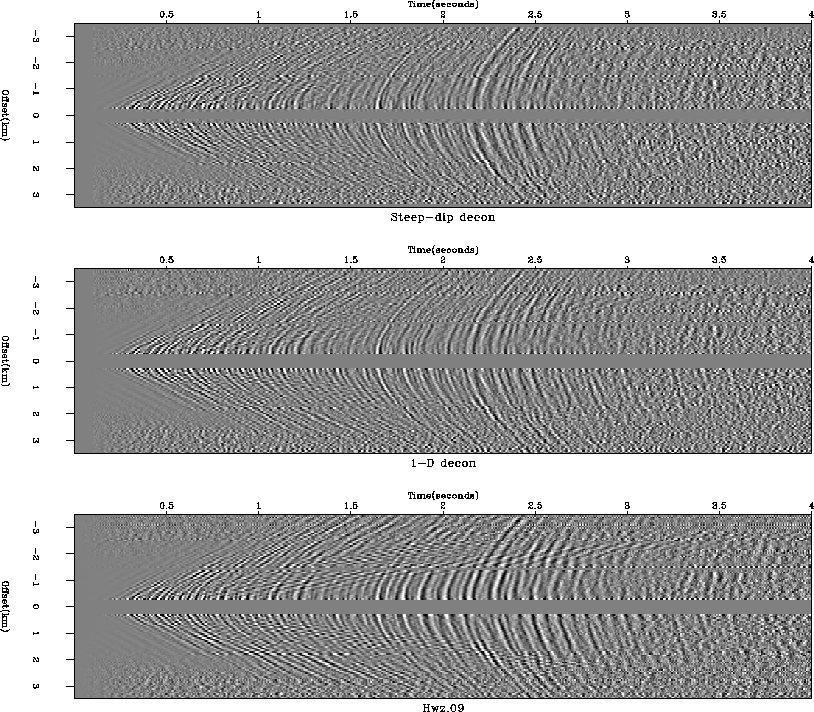 |
Figure 1 Bottom is an Alaska vibrator shot profile (Y&C #09) after AGC. Middle is gapped 1-D decon. Top is steep-dip decon.
Unexpectedly, results in Figures 1-6 show that the conventional 1-D deconvolution also suppresses low velocity noises. An explanation can be that these noises are often either low frequency or quasimonochromatic.
 |
Filters are never allowed off the edges of their application windows. Thus on all the deconvolutions at early times you see zero valued output of duration equal the filter length. Likewise, on the steep-dip deconvolutions, you see some missing output traces along the sides. The number of missing traces matches the halfwidth of the filter. These missing outputs may be unacceptable in a production environment. Fundamentally, my process cannot work ideally along the edges, but with a little extra coding, nonzero but nonideal outputs could be produced there. More drastically, you can imagine spatially one-sided filters like
x x x x x
x x x x x
. x x x x
. x x x x
. . x x x
. . x x x
. . . x x
. . . x x
. . . . .
. . . . .
. . . . 1
being applied on one side of the shot
with the opposite orientation being applied on the other side.
Such filters would not have missing outputs
at wide offset, but would have an inner offset problem.
The advantage of a double sided filter is that it should
be able to extinguish backscattered noises as well as direct noises.
We see this effect on Figure 4,
but unfortunately,
there are no interesting signals beneath the backscattered noises.
I did not test the spatially one-sided filters,
though it is simply a matter of changing a parameter in the existing code.